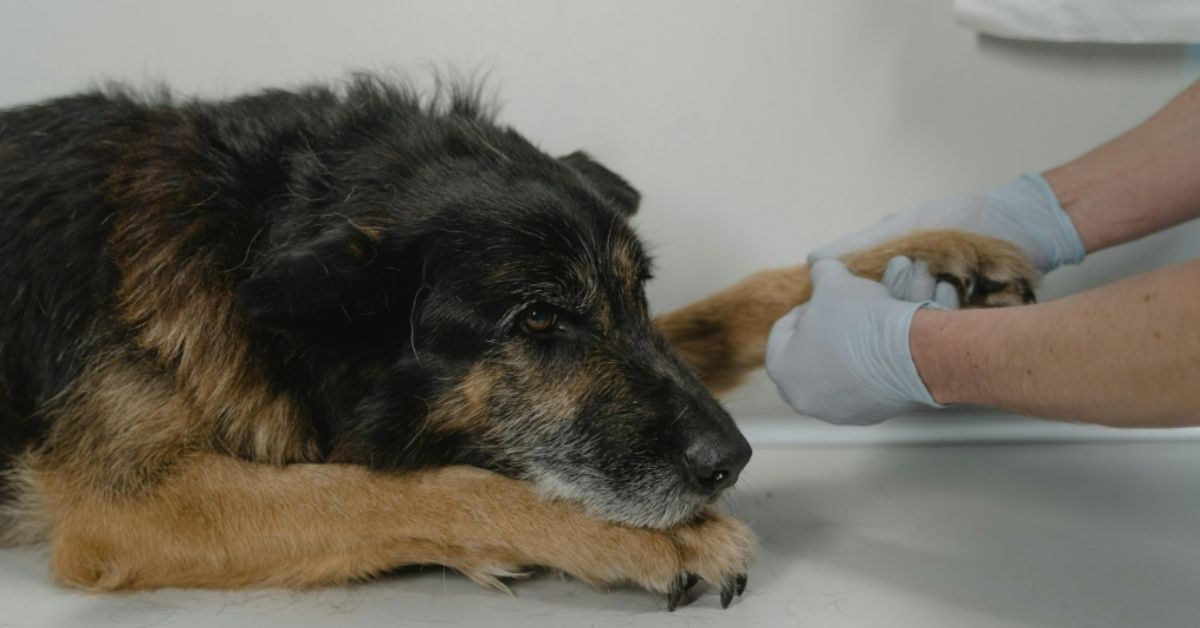The United Nations on December 7th recognized Gladys Kalema-Zikusoka as one of its “champions of the Earth” for promoting the One Health approach to conservation in Africa.
- The Ugandan conservationist, a trained wildlife veterinarian, established the NGO Conservation Through Public Health (CTPH) in 2003 to ensure better health care access for communities living around Bwindi Impenetrable National Park and to lower the risk of human pathogens jumping to mountain gorillas.
- UNEP selected Kalema-Zikusoka for its science and innovation category; the other awardees were Barbados Prime Minister Mia Mottley, Kyrgyz youth activist Maria Kolesnikova, and the nonprofit Sea Women of Melanesia.
- “If you make the community feel that you care about them, then there’s less need to fight them,” Kalema-Zikusoka said.

Years before the obsession with wild-borne pathogens latching onto humans gripped the world, Gladys Kalema-Zikusoka was already dealing with disease spillovers.
Except, she worried about humans infecting gorillas in her native Uganda.
“Disease transmission goes in both directions,” says Kalema-Zikusoka, a trained wildlife veterinarian.
It demonstrates, albeit narrowly, an idea gaining currency in the COVID-19 era: “One Health,” the worldview that human health and the health of the natural world are inextricably linked.
The United Nations on Dec. 7 hailed Kalema-Zikusoka as a “champion of the Earth” for putting the principle into practice in East Africa, where the human imprint on gorilla habitat is growing.
Bwindi Impenetrable Forest National Park, where Kalema-Zikusoka mostly works, is home to one of only two remaining populations of mountain gorillas (Gorilla beringei beringei).
All four gorilla subspecies (scientists are still debating if it should be five) are at risk of dying out.
The seeds for the NGO Conservation Through Public Health (CTPH), which Kalema-Zikusoka co-founded in 2003, were sown during her early years in Bwindi.
In 1996, she helped trace a scabies outbreak among mountain gorillas to people living around the park who themselves had little access to health facilities.
CTPH’s efforts over the years have earned Kalema-Zikusoka many accolades — from being awarded the prestigious Ashoka Fellowship in 2006 to becoming a National Geographic Explorer in 2018.
She is one of four women recognized as Earth champions this year. Tal Harris, a media consultant for the U.N. Environment Programme (UNEP), which administers the prize, said this wasn’t purposeful.
“The choice was based on merit,” he said. “There were many nominees and they stood out as the most impressive and inspiring.”
The other 2021 winners were Barbados Prime Minister Mia Mottley (recognized for her policy leadership), Kyrgyz youth environmental activist Maria Kolesnikova (for her entrepreneurial vision), and the nonprofit Sea Women of Melanesia (for their inspiration and action).
Kalema-Zikusoka won in the science and innovation category.

In a country, where fewer than six out of 10 teenage girls (15-18 years) have finished primary school, Kalema-Zikusoka was fortunate to receive higher education.
A still-untitled autobiography of Kalema-Zikusoka, set to hit bookstands next year, describes her years as a conservationist and also offers glimpses of her early life.
Kalema-Zikusoka was born in an illustrious Ugandan family: her father was a teacher-turned-politician allegedly murdered by then-President Idi Amin’s forces.
Her mother later became one of Uganda’s first woman parliamentarians. Kalema-Zikusoka discovered during her teenage years that her passion wasn’t politics but animals.
She decided to pursue veterinary studies at the Royal Veterinary College in the U.K., and went on to complete a master’s degree at North Carolina State University in the U.S.
“Her impact does not end with her work,” said Brian Atuheire Batenda, a Ugandan conservationist who has worked closely with Kalema-Zikusoka. “She is mentoring the young and inspiring them.”
At 25, Kalema-Zikusoka joined the Uganda Wildlife Authority (UWA), then known as Uganda National Parks, as the agency’s first wildlife vet.
In an interview with Mongabay, the 51-year-old, known to colleagues and friends as Dr. Gladys, described what it was like to work alongside conservation biologists in the mid-1990s.
According to them, “wild animals were supposed to be left on their own,” she said. “Sick animals are the next meal for the lions.”
But as a vet, it was her job to treat sick and injured animals. Moreover, she believed the context had changed.
“It can’t only be natural selection,” Kalema-Zikusoka recounted thinking. “We have already disrupted the natural way of life.”
With tourism growing in Rwanda, and Uganda emerging as a promising destination for great ape tourism, the gorillas would have to live with humans and their germs.
As in most countries, public health initiatives in Uganda are distinct from conservation programs, animated within their own constellation of actors, institutions, and incentives.
Traditionally, the interlinkages are overlooked, Batenda said.
“Their approach works because it takes into account the health of the people and health of the gorillas,” he said.
“It engages the local communities including the Batwa indigenous people into conservation decision-making.”
One of the ways CTPH is bridging the gap is through a disease early-warning system for both the animal and human populations.
It checks the risk of human pathogens escaping into livestock and wildlife or the other way around.
CTPH also works to raise awareness about and improve access to family planning in villages neighboring Bwindi Impenetrable National Park.
Kalema-Zikusoka describes health care as “a very good entry point” to get a foothold within communities. It also allows her team to engage with both men and women.

As a wildlife veterinarian at UWA, a semi-autonomous government body, Kalema-Zikusoka said it was difficult to generate interest and funding for her work.
However, another department, though it had been around longer, seemed to fare even worse: the community conservation unit.
“The wildlife authority was established in an era of fences and fines in the ’50s,” she said. NGOs like hers are trying to push past that.
What helps is that Bwindi is one of Uganda’s top tourist attractions, drawing in a steady stream of revenue.
Under Ugandan law, 20% of the park’s entry fee has to go to the local community.
Kalema-Zikusoka , who served as a UWA board member from 2012 to 2015, said she lobbied to increase the share received by communities from gorilla permits (which allow tourists to track the apes) from $5 to $10.
The NGO also pushed for a greater proportion of rangers to come from the communities.
“If you make the community feel that you care about them, then there’s less need to fight them,” she said.
When local people see tangible benefits from the presence of the gorillas, they are more willing to stop poaching and avoid bushmeat.
Gorillas are usually trapped for bushmeat or accidentally in snares meant for other animals.
CTPH also runs a program to encourage poachers to surrender and supports some reformed poachers by providing livestock and assistance for farming.
“People poach because they’re hungry, they have no other alternative,” Kalema-Zikusoka said. “It’s easier to convince people if you give them an alternative.”
She says it has helped the gorillas too: mountain gorilla numbers have almost doubled from 600 in 1996 to 1,063 today, and about 460 of the apes are found in Bwindi.
A decade ago, the Bwindi population was 400.

In 2018, global conservation authority the IUCN acknowledged an improvement in the conservation status of mountain gorillas from critically endangered to endangered.
However, as a whole, the eastern gorilla species, which comprises mountain gorillas and eastern lowland or Grauer’s gorillas (Gorilla beringei graueri), remains critically endangered.
The same pandemic that has brought greater attention to the risk of zoonotic diseases has also brought tremendous hardship for the people in Uganda who depend on ecotourism.
From guides to porters to farmers, the local economy around Bwindi suffered during the six months of complete lockdown and border closures last year.
The park reported an increase in poaching during this period.
Tourists are trickling back, but the number is still far from pre-pandemic levels. Local lockdowns and fresh concerns about new variants have dampened hopes for a swift recovery.
COVID-19 has accelerated the search for other ways to sustain conservation that aren’t dependent on tourism.
CTPH started Gorilla Conservation Coffee in 2015, sourcing coffee from small-scale farmers at above-market prices and selling it at a “conservation premium” in Uganda and in countries like the U.S., Canada, and New Zealand.
It’s a $1.50 markup per kilogram of coffee, of which the cultivators receive 50 cents, while the rest supports CTPH.
“I am glad that the One Health approach is being seen as a viable approach to conservation, that’s great,” Kalema-Zikusoka said.
“But there isn’t enough funding for One Health field programs, there’s more funding for higher-level academic programs.”
This article was originally published by Mongabay.





